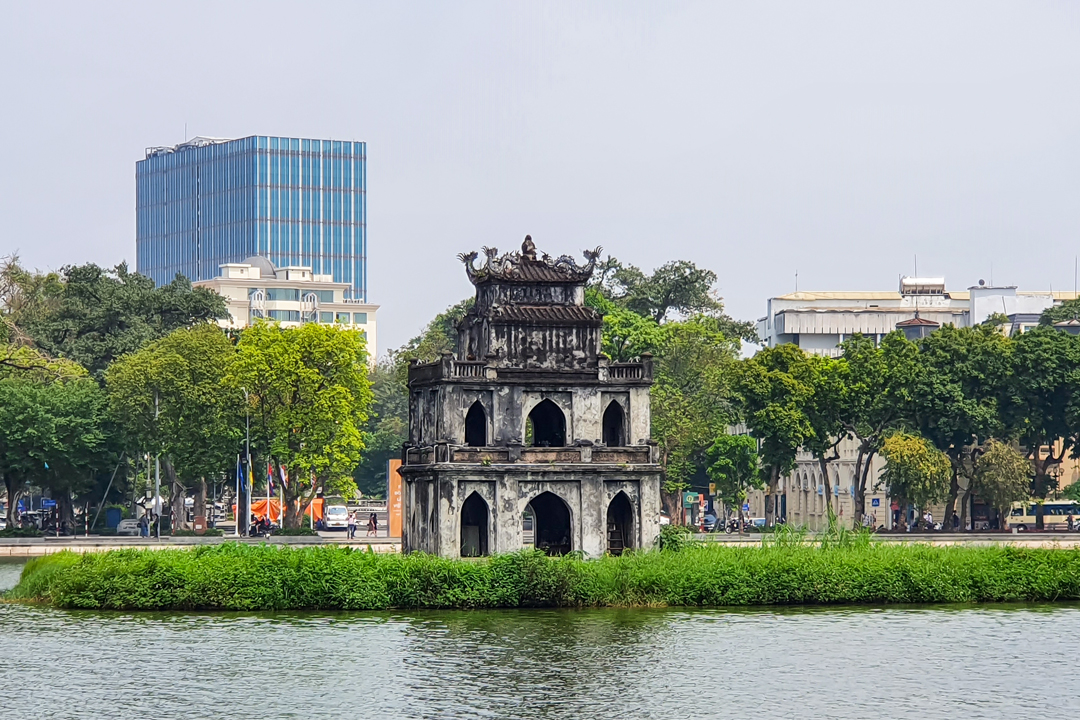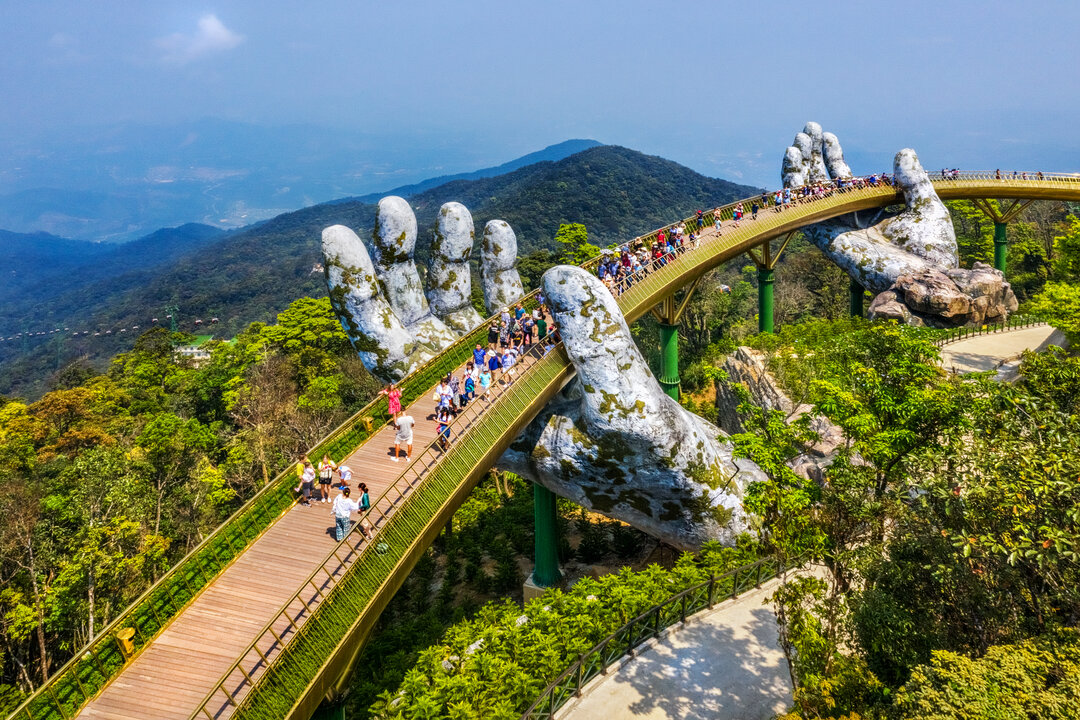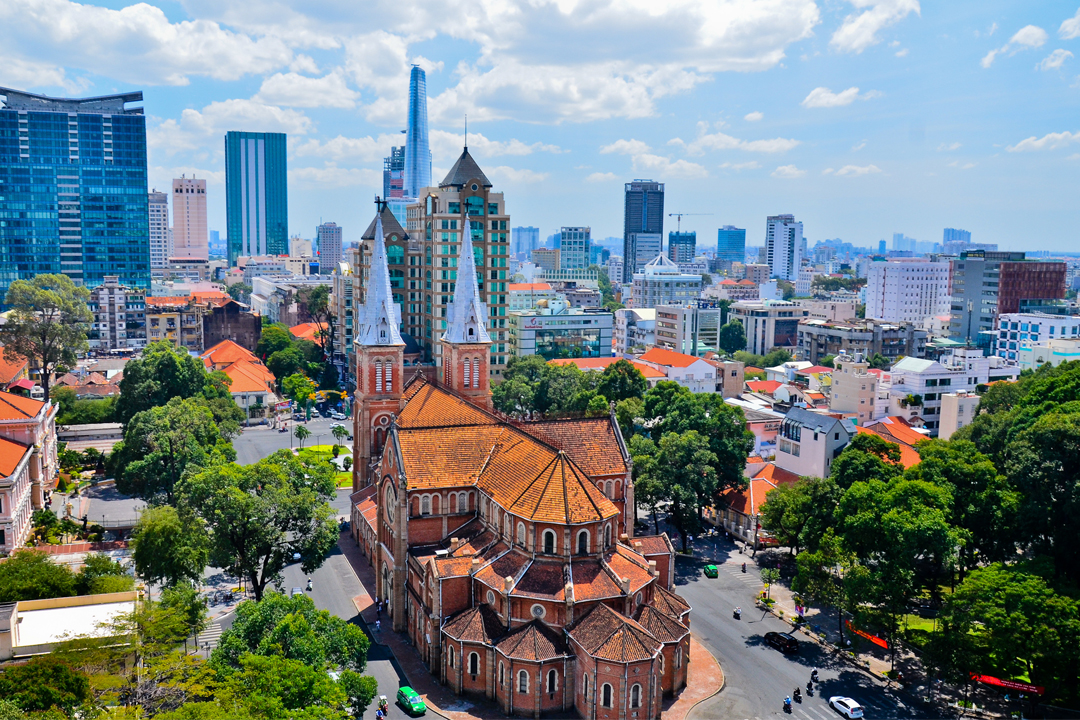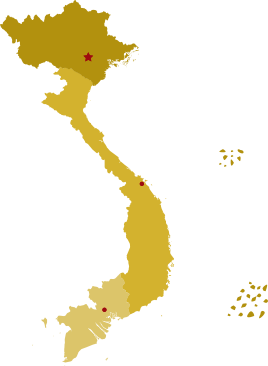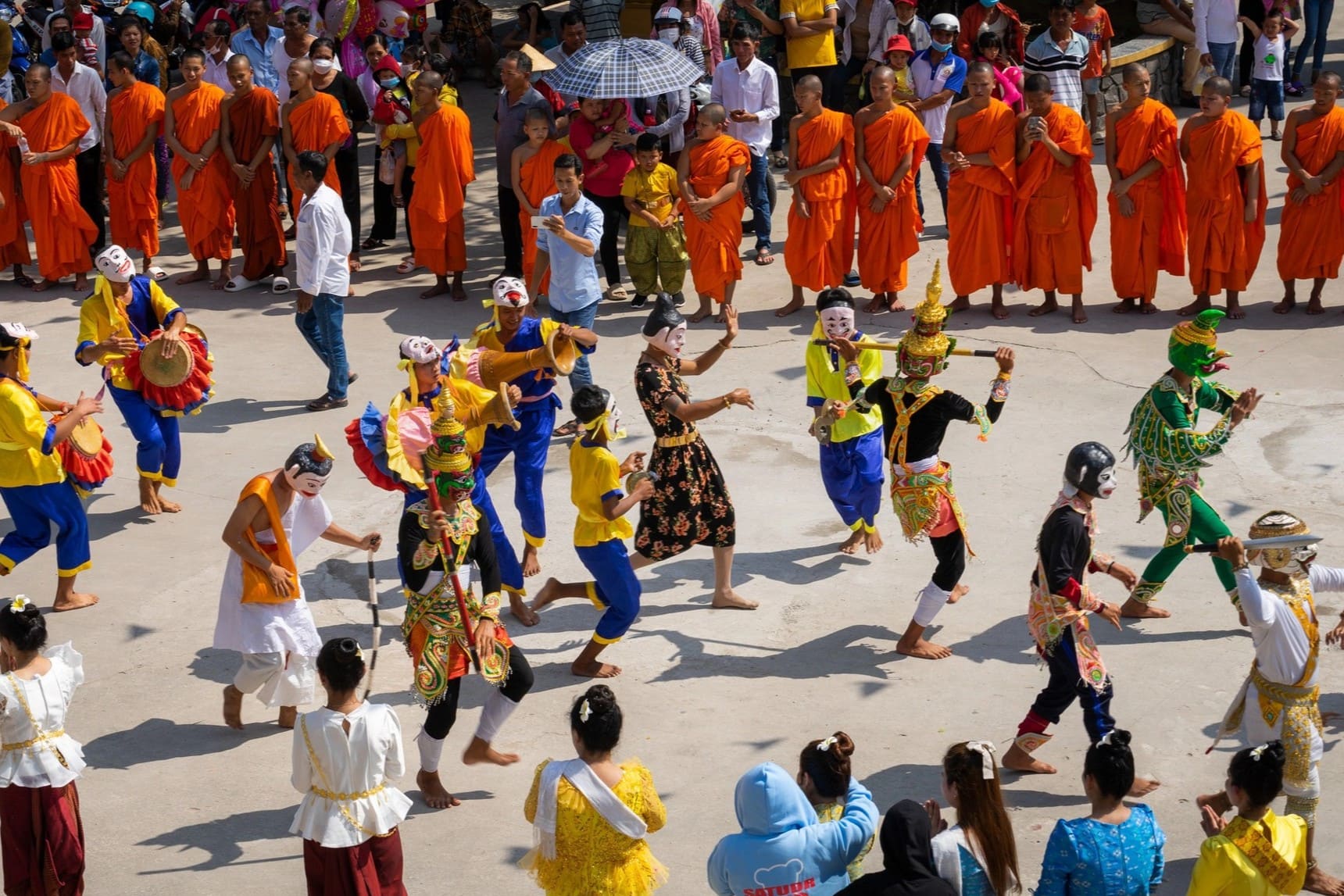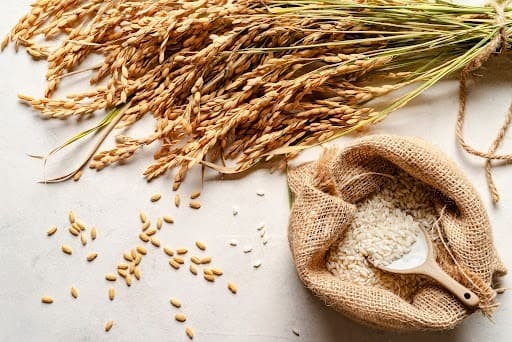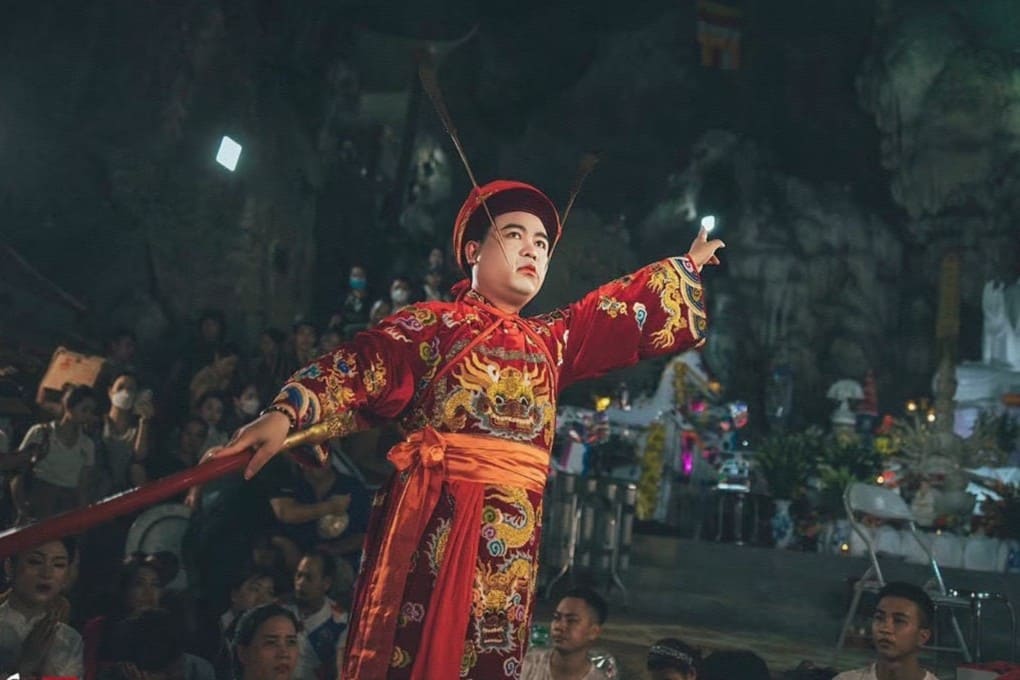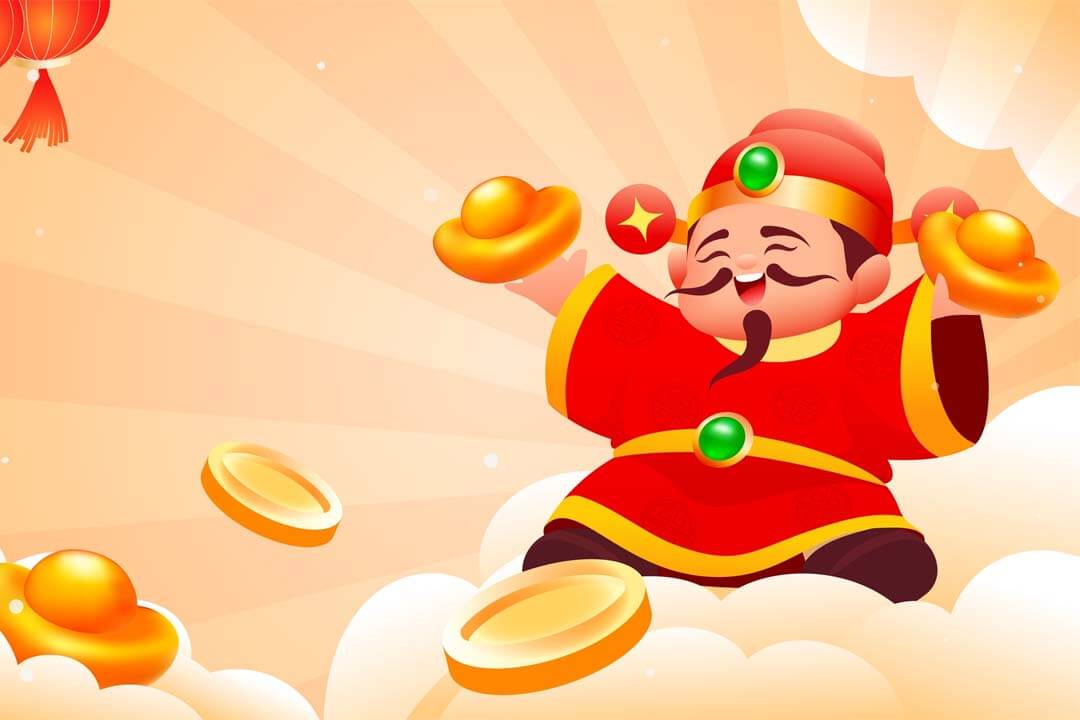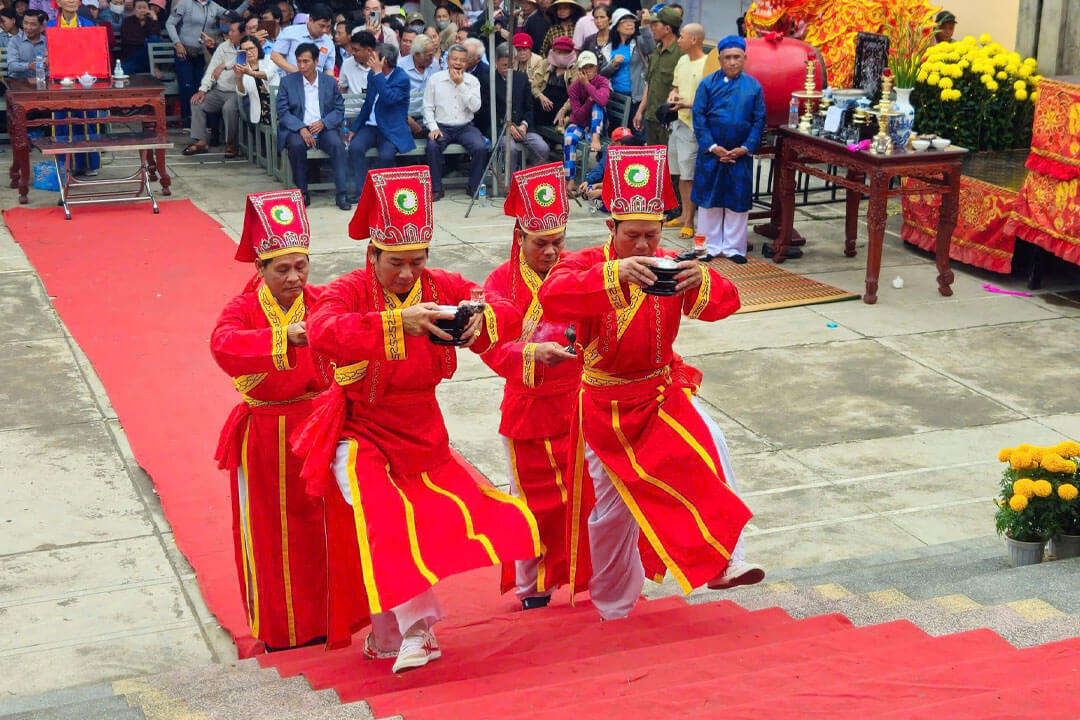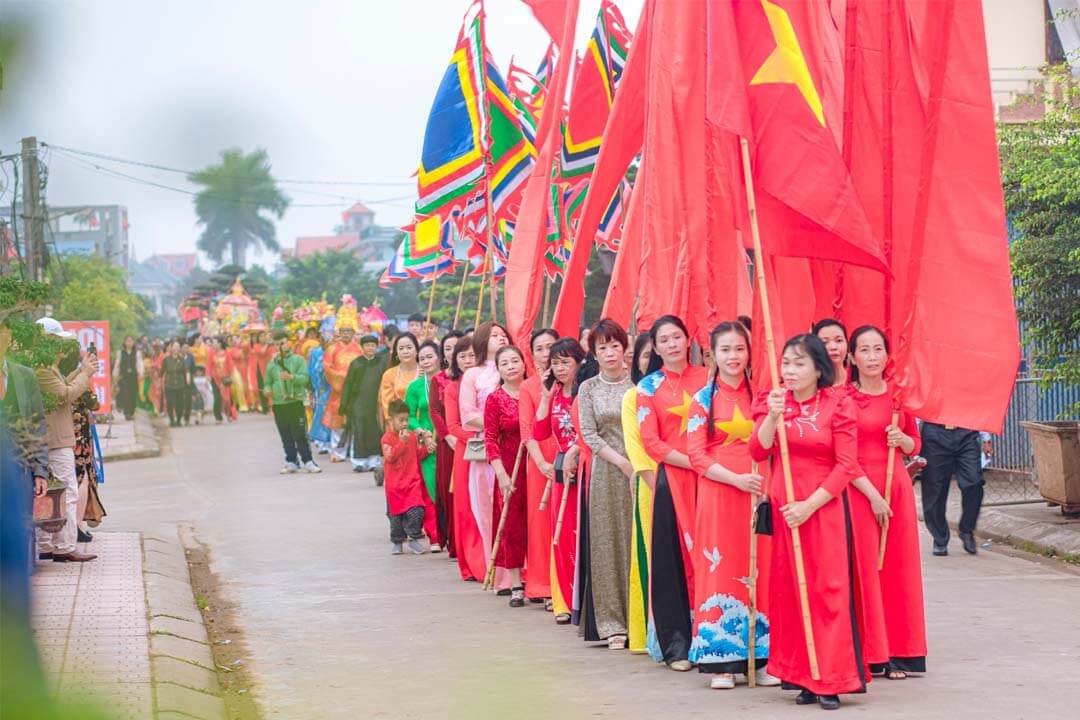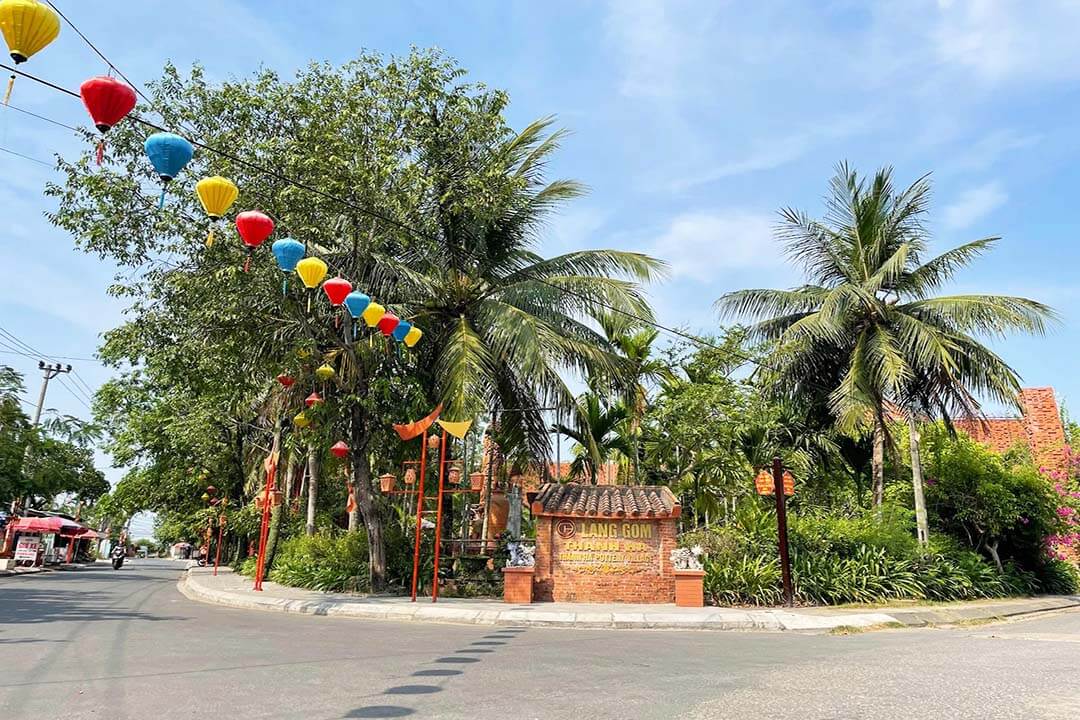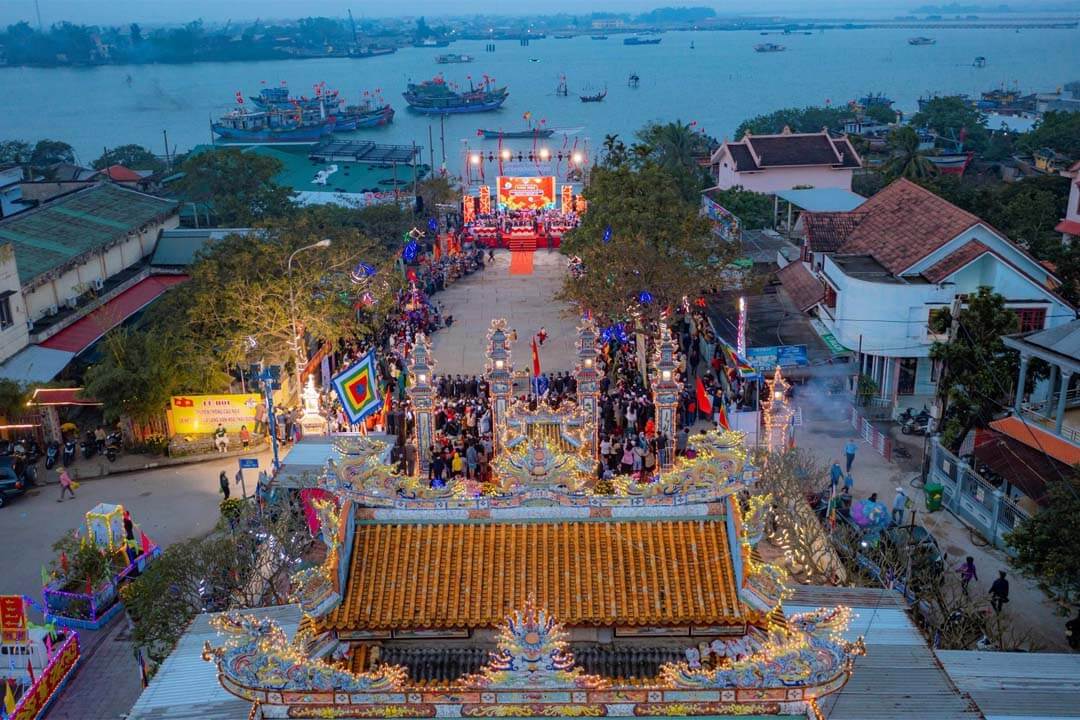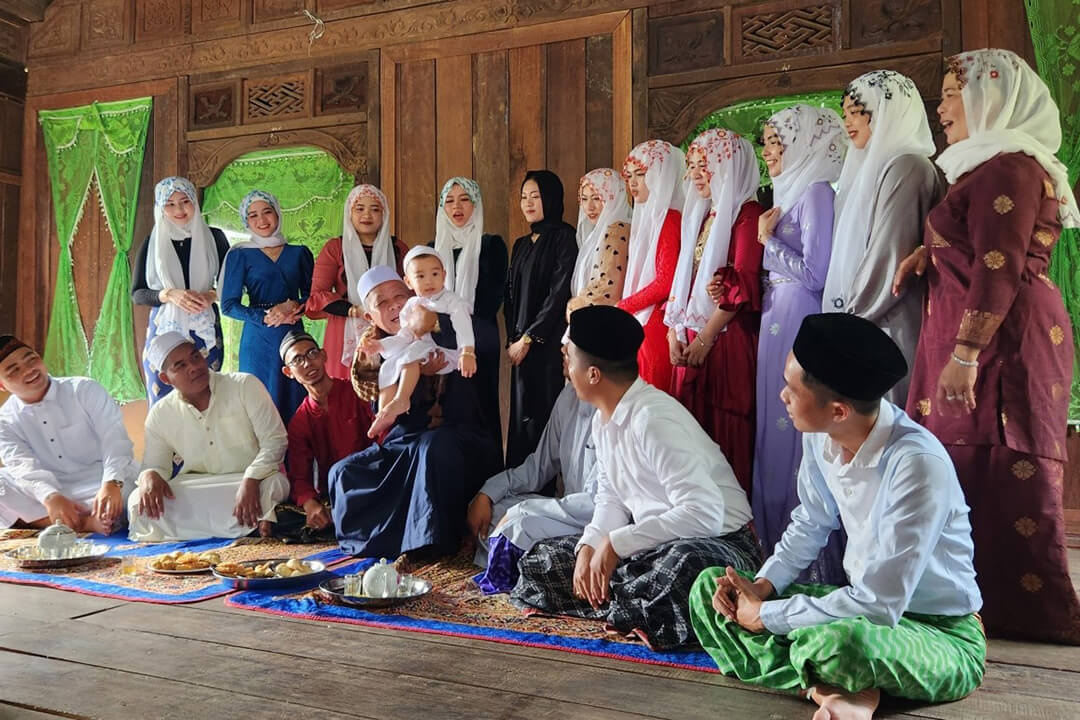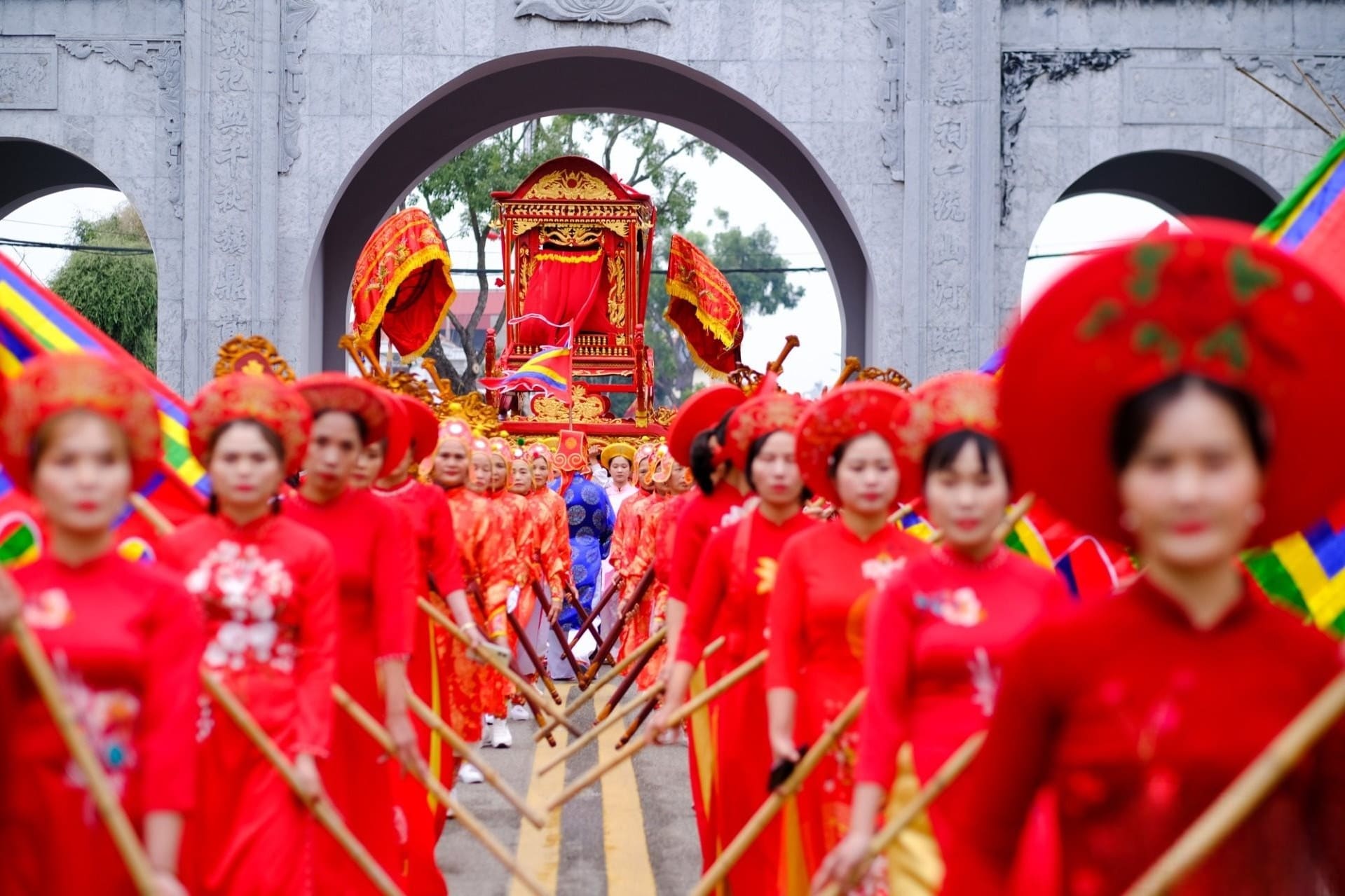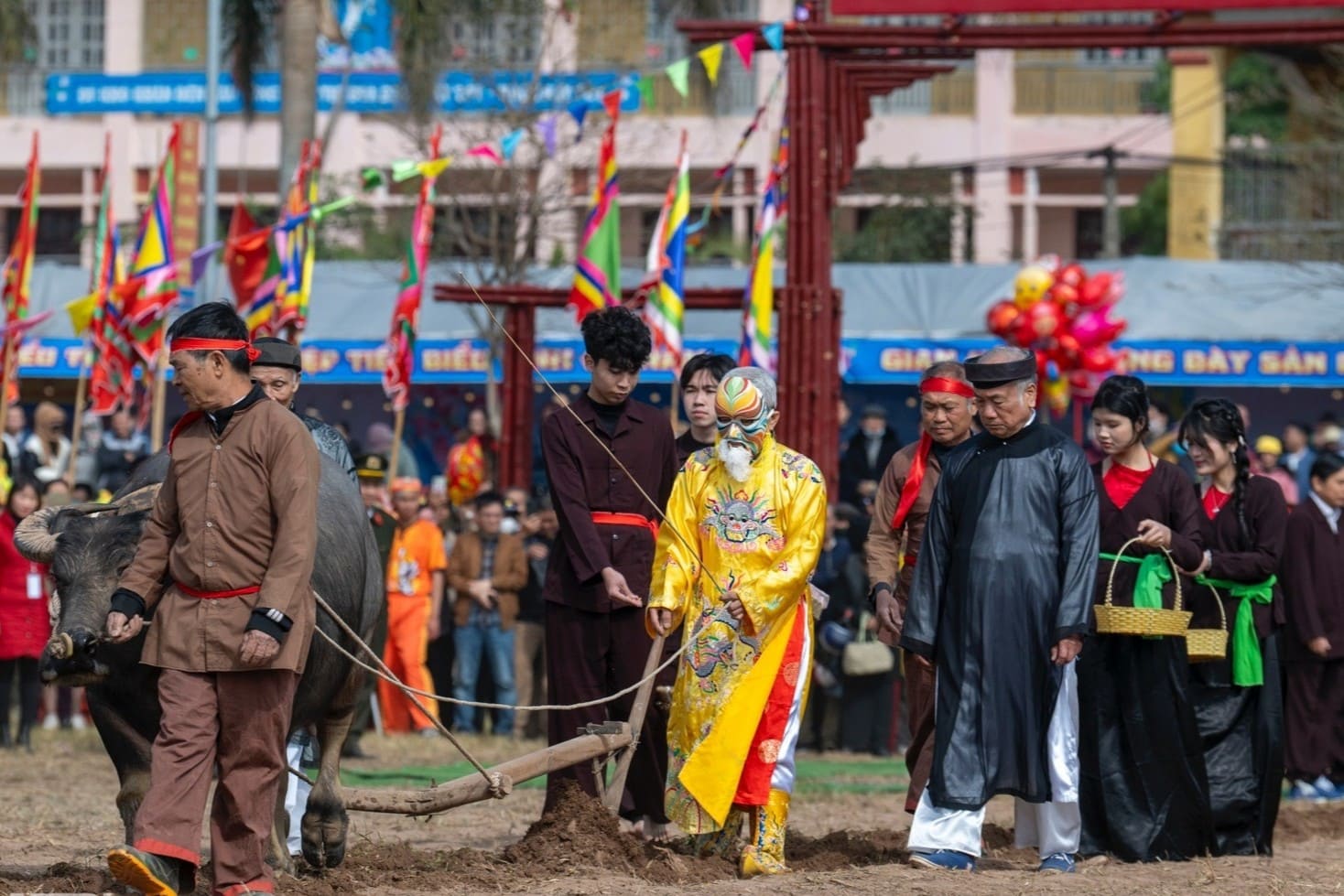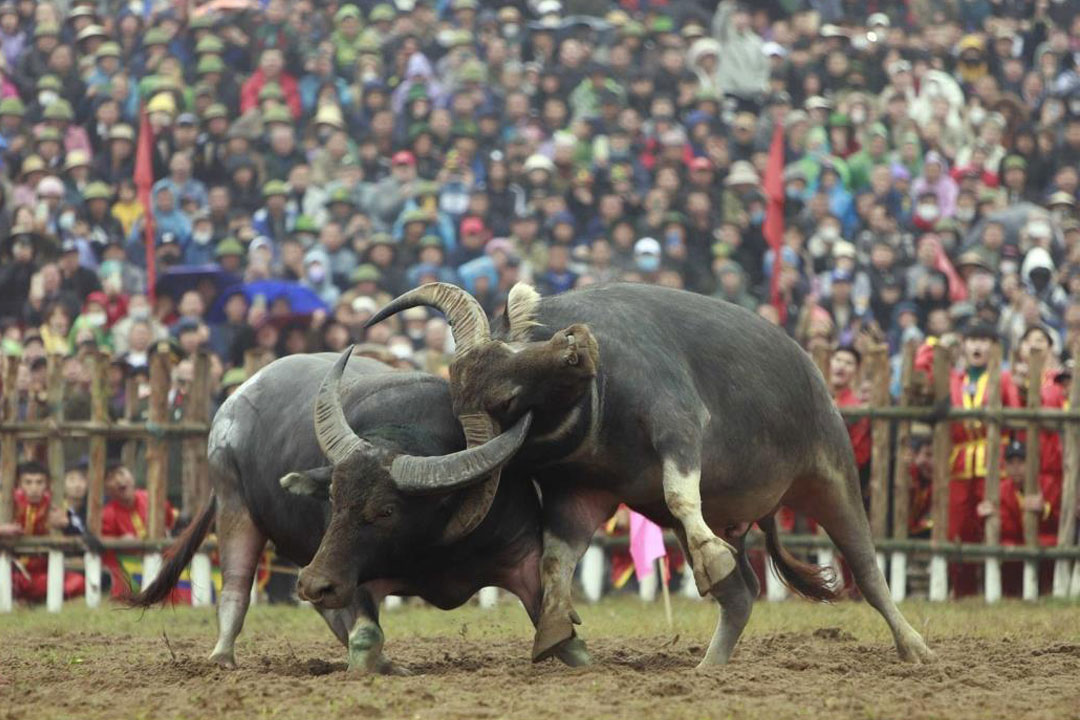Jul - 30 - 2025
Cau Bong Festival, or Drop Praying Festival, is the most vibrant celebration in Tra Que Herb Village, taking place every spring just days after Tet. During this time, the normally tranquil village lanes erupt in color, drumbeats, and the unmistakable fragrance of more than twenty kinds of herbs. The festival is a traditional rite where farmers honor Than Nong and their ancestors for fertile land and abundant harvests. The Cau Bong Festival is held annually on the 6th and 7th days of the Lunar New Year.
Origins and cultural significance of the Cau Bong Festival
The Cau Bong Festival began in northeast Hoi An (now Da Nang), where early settlers arrived centuries ago to build new lives. They discovered the fertile soil of Tra Que, an ideal place for growing aromatic herbs, especially Vietnamese coriander, a staple in central Vietnamese cuisine. Over the generations, the villagers formed a thriving agricultural community affectionately known as Tra Que Vegetable Village.
The lives of Tra Que’s people are deeply intertwined with nature, weather, and seasonal rhythms. Like many farming communities in Vietnam, they developed traditional rituals to pray for favorable weather, abundant harvests, and family well-being. Among these, the Cau Bong Festival stands out as the most sacred and symbolic celebration, blending spiritual devotion with strong community bonds.
Held in the early days of the lunar new year, the festival marks the beginning of the new agricultural season. The name “Cau Bong” literally means “praying for flowers”, symbolizing hope that crops will bloom and bear fruit, a metaphor for prosperity and growth. The festival features incense offerings, a procession for the Earth God (Than Nong), and traditional performances with folk games.
Today, the Cau Bong Festival is not only a cherished tradition for locals but also a unique cultural attraction for both domestic and international visitors. Amid the bustling streets of Hoi An, the festival offers a serene and meaningful space where people reconnect with nature, heritage, and community spirit. It embodies the simple yet profound wishes of farmers, for rain and wind in harmony, for rice and herbs to flourish, and for happiness to fill every home.
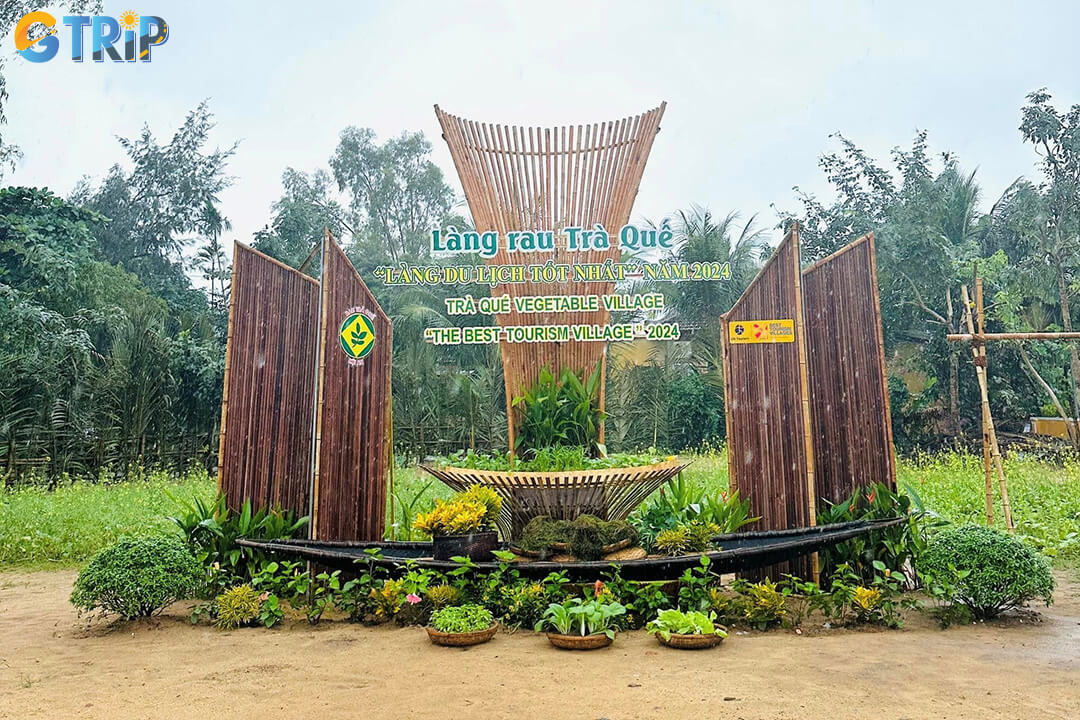
The Cau Bong Festival is a centuries-old celebration in Tra Que Village that blends ancestral worship, agricultural rituals, and eco-tourism into one vibrant cultural event
Key rituals and ceremonies of Cau Bong Festival in Tra Que Herb Village
The Cau Bong Festival takes place on the 6th and 7th days of the Lunar New Year in Tra Que Herb Village. It is one of the most vibrant traditional events that honors the Earth God and celebrates the village’s farming heritage.
The rituals of Cau Bong Festival
From the early morning hours, the village bustles with activity as families prepare their offerings, an essential ritual in the worship of the Earth God (Than Nong). Each household presents five trays of pink sticky rice, a rooster with a flower in its beak and a sharp bamboo knife inserted into its back. These are accompanied by the rooster’s offal, sausage, blood, and a cup of white wine. A fresh flower is also placed on each tray of sticky rice, representing prayers for a fruitful year.
The ceremony begins with the Nghinh Than (Welcoming the Deity) ritual. Villagers from all directions gather at the Tien Hien communal house. The solemn procession features flags, ceremonial music, artisans, and elders in traditional attire carrying incense burners and sacred altars. Women in elegant ao dai follow behind, gracefully carrying elaborately decorated trays of five-fruit offerings, creating a vibrant and reverent atmosphere.
Once the procession returns to the communal house, the land worship and ancestral rites begin. These are moments for the villagers to honor their ancestors who reclaimed and cultivated the land, and to express gratitude to Than Nong for a bountiful harvest. During the main ritual, a senior village elder reads the ceremonial text aloud, extolling the blessings of nature and the enduring legacy of the forefathers.
After the ceremony, the village elders carefully inspect the rooster’s feet, an age-old method of divination. If the middle of the rooster’s foot appears full and well-formed, it is believed to predict a peaceful year, with flourishing crops and harmony throughout the community. This is more than just a spiritual practice, it reflects the deep-rooted reverence of Vietnamese farmers for the land, nature, and ancestral wisdom.
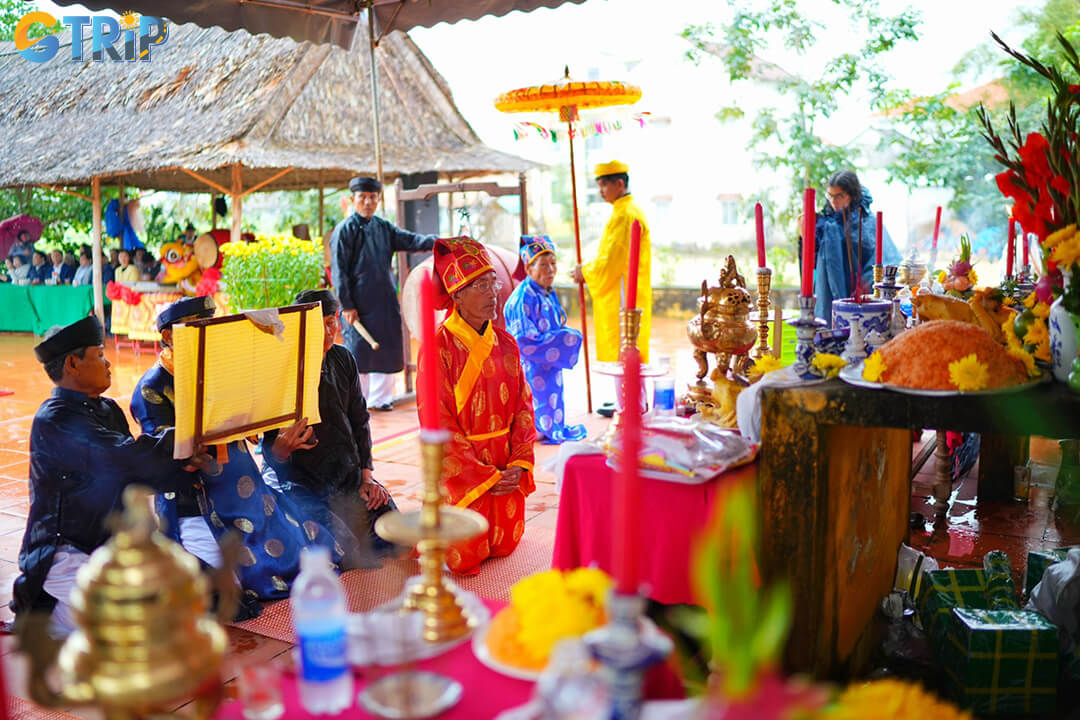
The main worship ceremony features ritual chants, symbolic offerings, and a fire rite for renewal, marking the spiritual start of Tra Que’s new farming year
The festive activities of Cau Bong Festival
As the drum signals the start of the festivities, the village of Tra Que comes alive with energy. The event kicks off with a farming competition between local hamlets, featuring tasks such as digging, forming beds, watering, and pruning vegetables. Though these actions may seem simple, they require skill, finesse, and years of experience. More than just a contest, it is a celebration of the hardworking spirit and craftsmanship of Vietnamese farmers. The winning hamlet is honored and treated to a grand feast in a joyful communal gathering.
Next is the Tom Huu cooking competition, a signature dish unique to Tra Que. Made from familiar ingredients like shrimp, boiled pork belly, fresh basil, and scallions, each team showcases their culinary talent and creativity through preparation and presentation. This is not merely a cooking contest, but a vibrant display of culinary heritage, where every dish tells a story of tradition and community. The best version of Tom Huu is awarded with applause, pride, and a well-deserved prize for the victorious team.
For tourists, the Tra Que Festival is more than just a cultural event, it’s an unforgettable hands-on experience. You won’t just leave with great photos, you’ll leave with stories, meaningful connections, and a deeper appreciation for the spirit of Vietnam’s rural heartlands. Tourists can try traditional farming techniques and taste home-cooked dishes made with love, and every moment offers a hands-on, unforgettable experience.
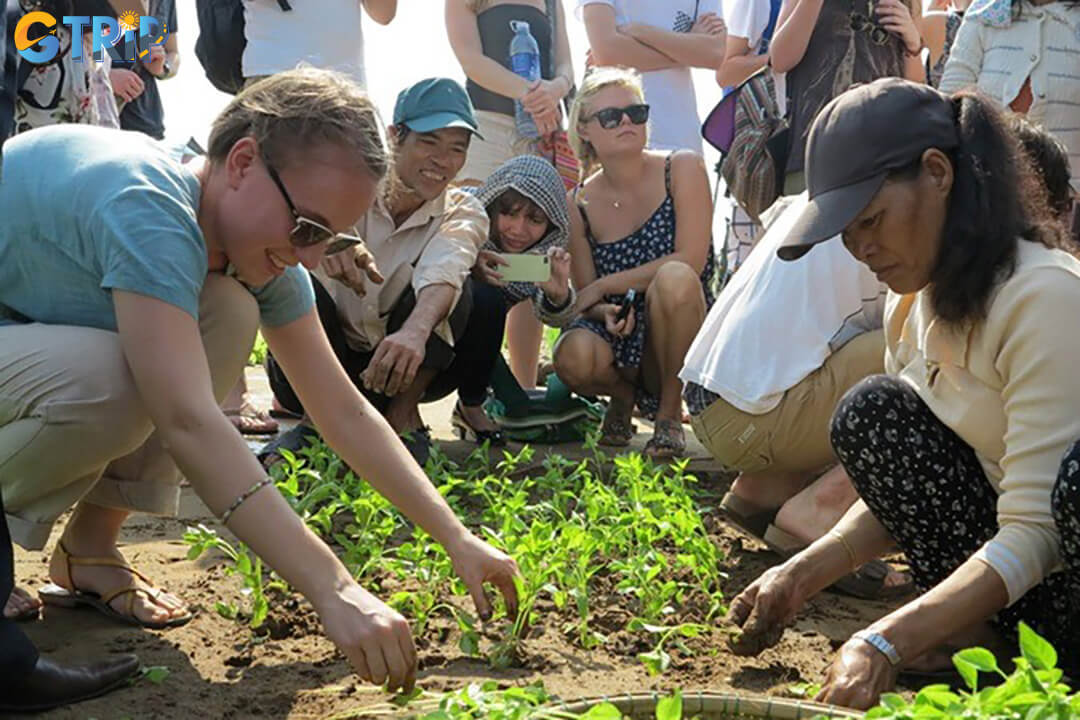
A vibrant celebration of Tra Que’s farming roots and culinary heritage, featuring lively competitions in vegetable growing and the signature Tom Huu dish
The Cau Bong Festival is more than just a celebration's a powerful expression of Vietnam’s agricultural roots, spiritual traditions, and community values. As Tra Que gains global recognition for eco-tourism, the festival attracts travelers seeking authentic cultural experiences. Book your Vietnam tour now and experience the heart of Tra Que in full bloom.

